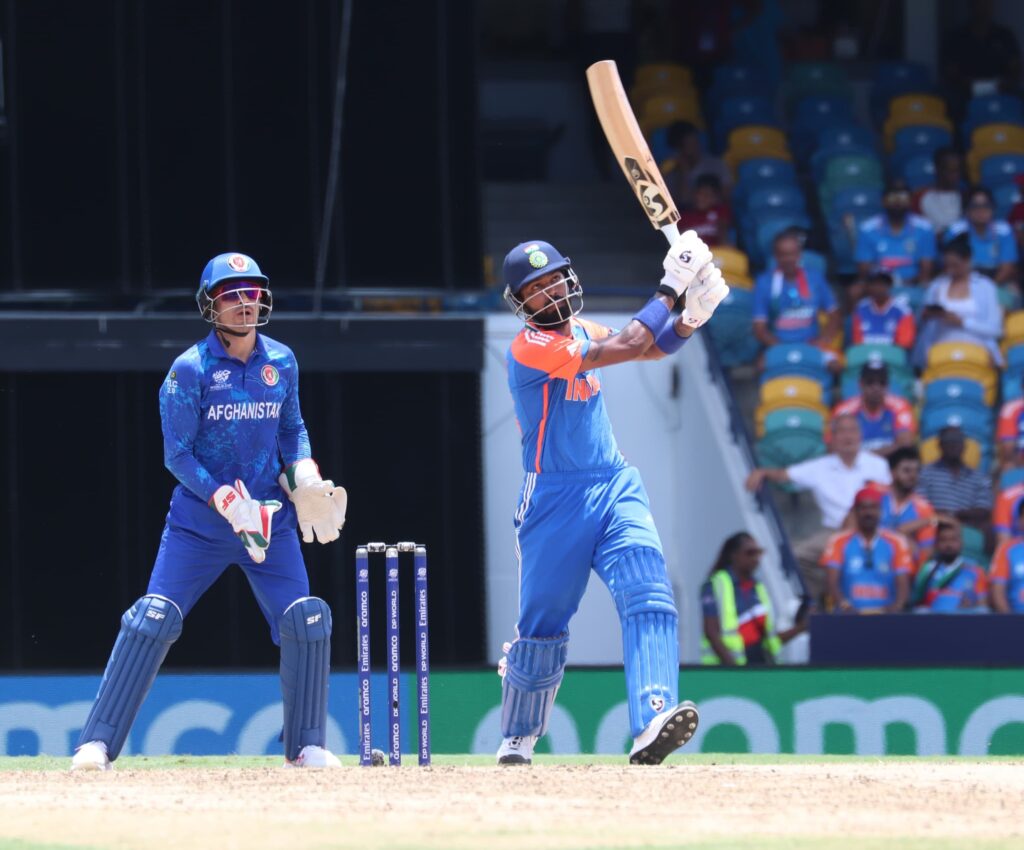
The last time India played against Afghanistan before their T20 World Cup Super Eights fixture on Thursday, two sets of Super Overs had to be used to decide the winner. India eventually clinched it, but on a January evening, in excellent batting conditions in Bangalore, Afghanistan had stretched the hosts to the limit.
Normality returned on a Kensington Oval pitch that tested the batsmen’s skill sets. India were the better team and they rolled over Afghanistan. During their 47-run victory, India also showed why they are one of the favourites to win the T20 World Cup. On a day when the team’s top order didn’t fire, the middle order, led by Suryakumar Yadav, stood up to be counted. And then, there was Jasprit Bumrah to spearhead India’s bowling.
But even in a thumping win, a question remained. Can India go all the way with Rohit Sharma and Virat Kohli as their opening pair? The India captain and his predecessor didn’t have good games. Rohit scored eight off 13 balls, while Kohli made run-a-ball 24. But more than the numbers, it was about how they struggled to force the pace. At times, it felt like T20 cricket at international level has passed them by.
Both Rohit and Kohli are by-products of convention. Of late, they have changed their batting approach in white-ball cricket, but unlike Surya, they would never try to play a wide full toss to the square-leg boundary. Unlike Rishabh Pant, they would hardly ever try to reverse-sweep an off-spinner over point. That is not part of their system. Modern T20 cricket, however, demands such innovations.
Yes, the Kensington Oval pitch wasn’t conducive to stroke-play. It was slow, the ball was stopping and hitting through the line was difficult. Then again, on the same pitch, Surya blitzed to a 28-ball 53, Pant scored 20 off 11 balls and Hardik Pandya made 32 off 24 deliveries. They batted without the fear of failure.

Conservatism was India’s bugbear in a T20 World Cup semi-final in Adelaide two years ago. Batting first, India made a shaky start. Rohit laboured to a 28-ball 27. Kohli scored a half-century, but his strike-rate was 125. And Surya fell cheaply, which put paid to India’s chances of posting a match-winning total. Without Pandya’s 33-ball 63, they probably wouldn’t even have reached 150.
England, in reply, blazed to 170 in 16 overs, winning by 10 wickets.
Two years down the line, has anything changed? Maybe not. Else, Shubman Gill and Yashasvi Jaiswal probably would have opened for India at this T20 World Cup. It’s ironic that Gill is not even in the 15-member squad, while Jaiswal is cooling his heels in the dug-out. After vowing to learn from their mistakes and going through the regeneration process for a year, it was back to square one, with both Rohit and Kohli brought back to the T20I fold before the T20 World Cup. The selectors ostensibly fell prey to Indian cricket’s star culture.
There’s, however, a big difference this time; the presence of Bumrah. The world’s best fast bowler is on a roll. Against Afghanistan too, he was India’s best bowler, taking three wickets and giving away only seven runs in his four overs. But what will happen if he has an off day in the knockouts (it would be an upset if India don’t reach semi-finals)? What will happen if Surya gets out cheaply in a win-or-bust game, against tougher opponents?
Modern-day T20 cricket is about playing aggressive cricket top-down, irrespective of conditions and situation. Kolkata Knight Riders showed that during their title-winning IPL campaign this term. India probably can’t do that because they don’t have a Phil Salt-like opener.
“As long as Bumrah stays fit, India are in this World Cup,” Lawrence Booth, the editor of Wisden Cricketers’ Almanack, posted on X (the erstwhile Twitter) after the India-Afghanistan game. “Still not convinced Virat Kohli is worth his place, mind you.”
The merciless trolling that came in its wake notwithstanding, the senior cricket journalist was right in his assessment.
Also Read: England batting vs South Africa bowling in shootout for semi-finals